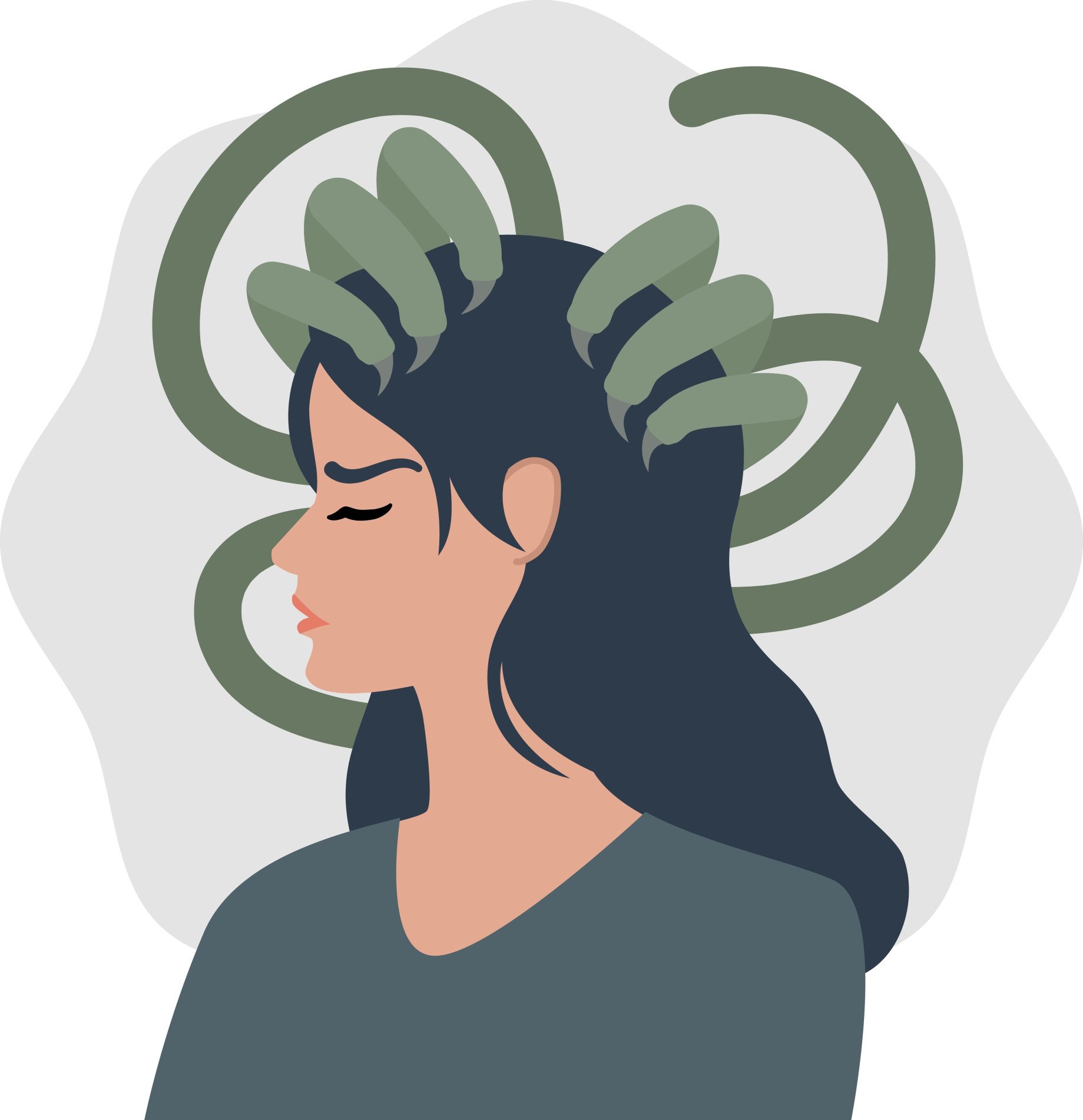Most people have experienced an unsettling thought that appears out of nowhere, whether it’s an odd mental image, a sudden worry, or an unwanted memory. These intrusive thoughts are usually fleeting, but for some, they persist and cause distress.
Understanding why they arise and why they stick has long puzzled researchers, especially since they occur in both clinical conditions like obsessive-compulsive disorder (OCD) and in people without mental health diagnoses.
A new study by Saki Hinuma, Hiroyoshi Ogishima, and colleagues, published in Frontiers in Psychiatry (2025), explores this issue by classifying patterns of intrusive thoughts based on the different psychological mechanisms that shape them.

The researchers found that intrusive thoughts could not be explained by OCD tendencies alone. Instead, they identified three key factors—negative evaluation of thoughts, stress responses, and excessive attempts to control thoughts—that together influence how intrusive thoughts occur and persist.
By analyzing these factors, participants were grouped into five distinct subtypes, each with its own coping style.
Intrusive thoughts are defined as unwanted thoughts that arise involuntarily and are difficult to control.
They are most commonly associated with OCD, but they also appear in anxiety disorders, depression, post-traumatic stress disorder, substance use problems, and in healthy individuals.
Previous studies have mostly examined intrusive thoughts within the context of OCD, leaving unanswered questions about why they occur so widely and why they differ across individuals.
To investigate, the team conducted an online survey of 298 Japanese adults aged 20 and older.
Participants completed several psychological questionnaires that measured obsessive beliefs, stress responses, thought suppression, and personal evaluations of their intrusive thoughts.
Using a machine learning method called co-clustering, the researchers simultaneously grouped both participants and the psychological factors influencing their thoughts.
This approach allowed them to map out not only what drives intrusive thoughts but also how different subgroups of people experience and manage them.
The analysis revealed three main contributors to intrusive thoughts.
The first was “negative evaluation,” meaning participants judged their intrusive thoughts as irrational, immoral, or repugnant.
The second was “stress response,” reflecting high levels of anxiety, irritability, or hopelessness.
The third was “excessive control,” describing rigid beliefs about needing to control thoughts and attempts to suppress them.
Based on these dimensions, five subtypes of people emerged. One group scored high on all three factors, while another scored low across the board.
Three intermediate groups showed more specific patterns: one evaluated thoughts harshly but had moderate stress, another experienced low negative evaluation but higher stress, and a third showed low stress but strong negative evaluation and control tendencies.
Importantly, each group displayed different coping strategies.
For example, those in the high-overall group tended to “give up” when facing stress, while those with strong negative evaluations often avoided responsibility.
By contrast, individuals who evaluated their thoughts less negatively leaned toward planning and problem-solving, while others relied more on emotional outlets like catharsis or positive reinterpretation.
These differences suggest that the persistence of intrusive thoughts is shaped not only by cognitive and emotional factors but also by the ways people attempt to cope with them in daily life.
The findings matter because they show that intrusive thoughts are not a single, uniform phenomenon tied only to OCD.
Instead, they arise from the interplay of stress, beliefs, and coping styles that vary across individuals.
For everyday life, this means that people experiencing troubling thoughts might benefit from strategies tailored to their particular patterns rather than one-size-fits-all approaches.
For instance, those who judge their thoughts harshly may need cognitive techniques to reframe their evaluations, while those who struggle with stress responses may benefit more from stress management or mindfulness practices.
The study also underscores why intrusive thoughts show up in such diverse contexts, from trauma to depression to everyday stress.
By highlighting the role of stress and control attempts, the research supports the idea that trying too hard to suppress a thought may paradoxically make it more persistent—a finding that resonates with many people’s lived experience.
The authors caution that their classifications are not the only possible way to group intrusive thoughts.
Results could differ with other measures or larger samples, and the study did not directly assess related conditions like anxiety and depression, which may further shape thought patterns.
Still, the use of co-clustering provides a novel, data-driven framework that captures the complexity of how intrusive thoughts emerge and are maintained.
Looking ahead, the researchers suggest that personalized approaches to treatment could be informed by these findings.
Interventions may need to consider not just the presence of intrusive thoughts but also how individuals evaluate, respond to, and attempt to cope with them.
Such insights could help refine therapies for OCD and other conditions where intrusive thoughts play a central role, while also offering strategies for people who experience them in everyday life.
By breaking intrusive thoughts down into distinct patterns, this study moves toward a more nuanced understanding of an experience that touches nearly everyone at some point, offering both scientific clarity and practical relevance.
Citation
Hinuma, S., Ogishima, H., Shimada, H., Tanaka, Y., Osao, M., Moriishi, C., & Obata, S. (2025). Classification of intrusive thought patterns based on differences in the mechanisms of occurrence and persistence. Frontiers in Psychiatry, 16, 1520496. https://doi.org/10.3389/fpsyt.2025.1520496


